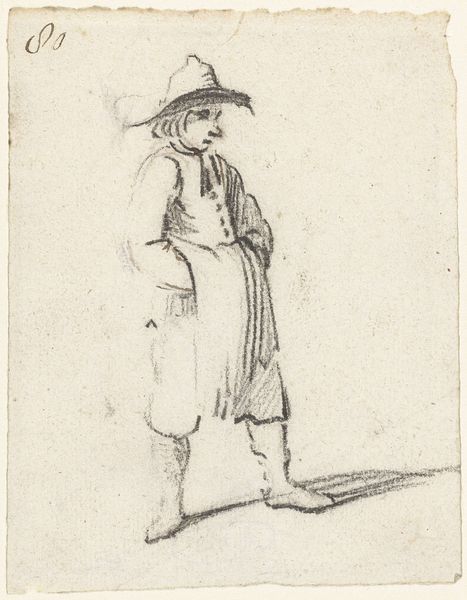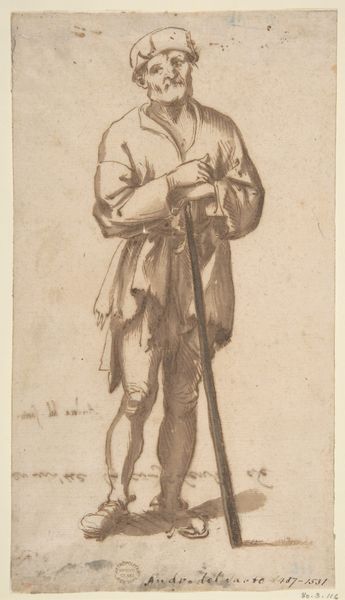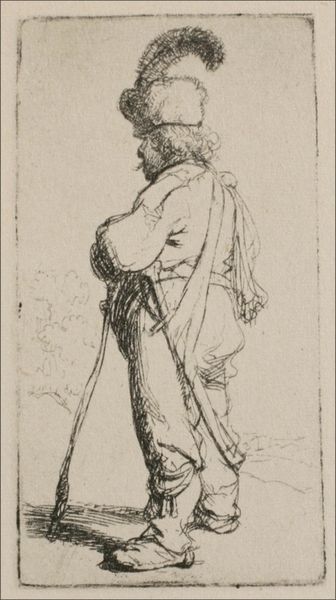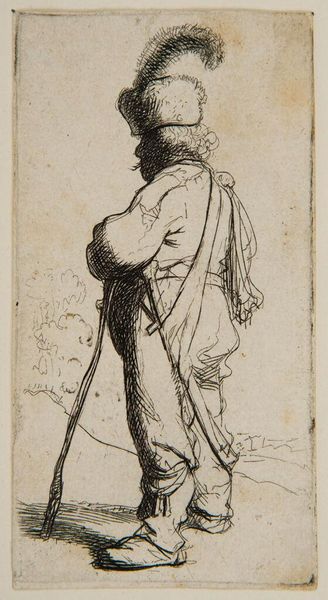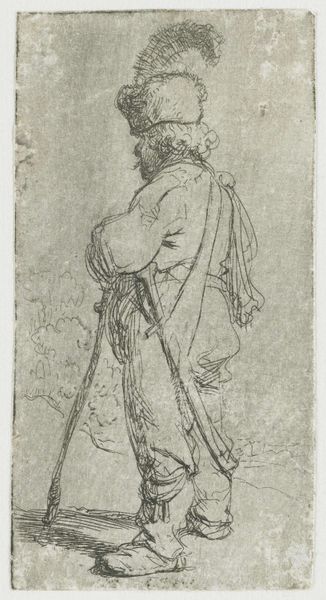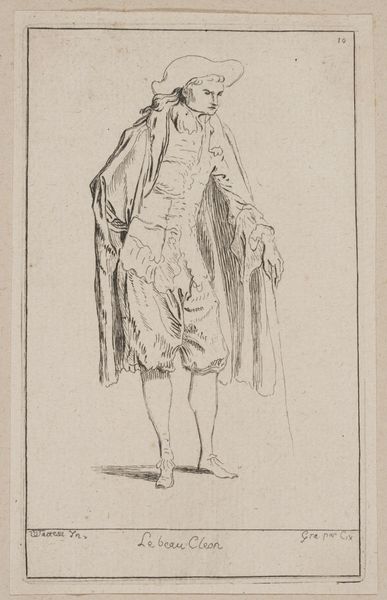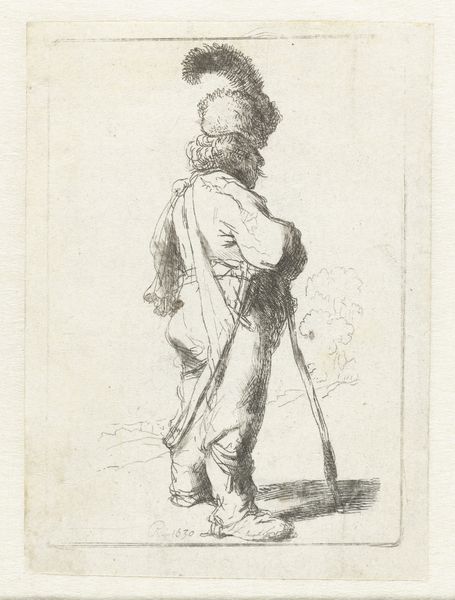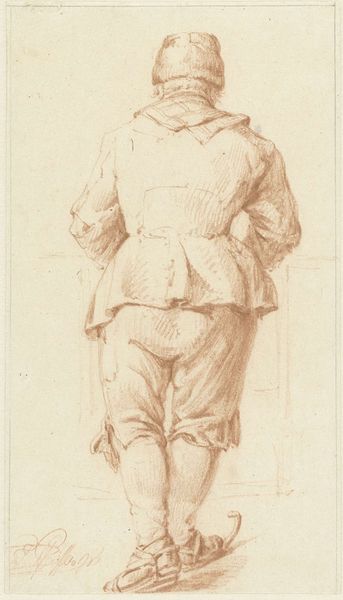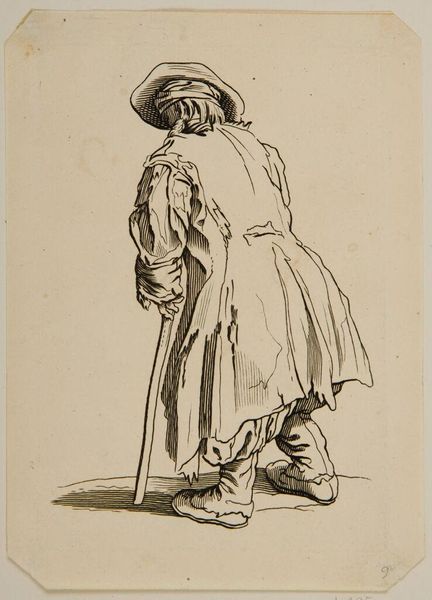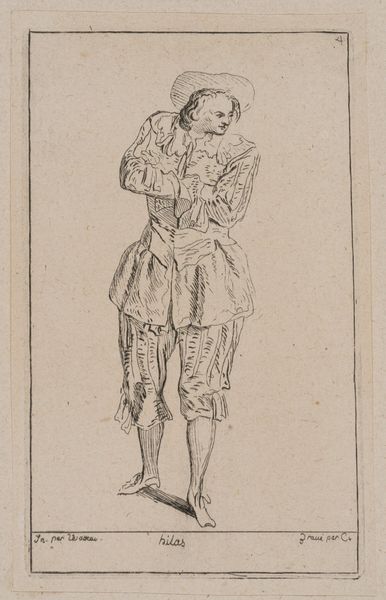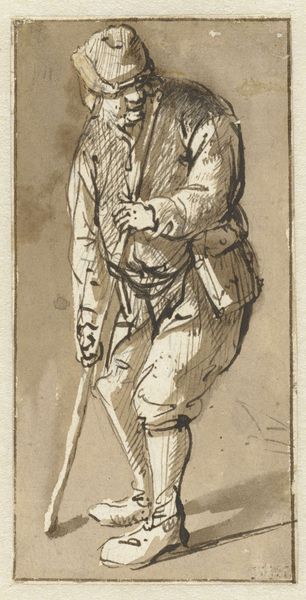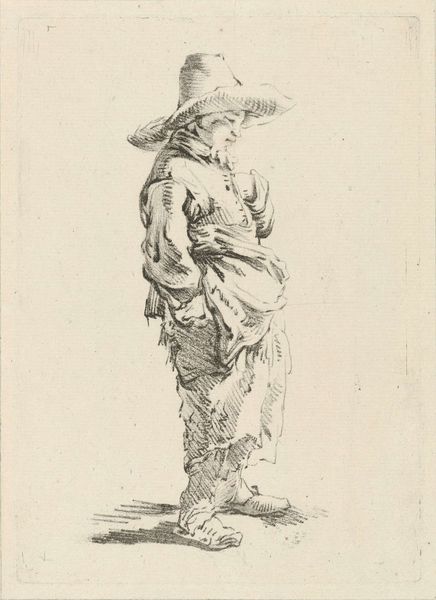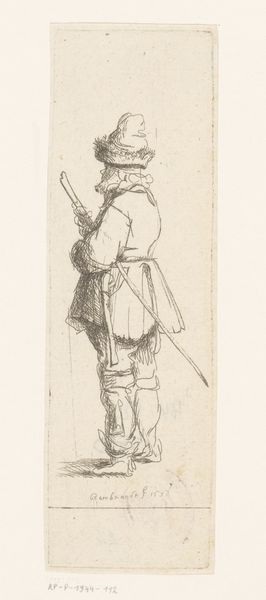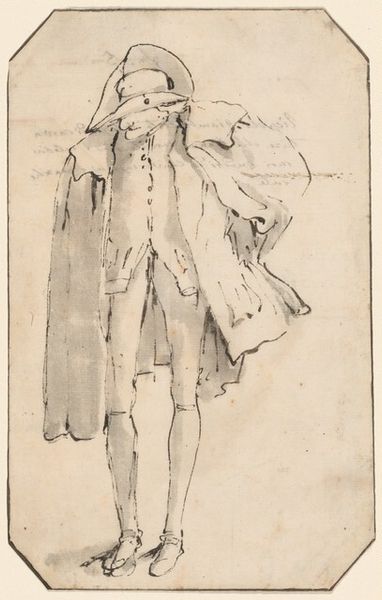
drawing, print, etching
#
drawing
#
baroque
# print
#
pen sketch
#
etching
#
pencil sketch
#
figuration
#
sketch
Copyright: Public domain
Editor: Here we have Rembrandt van Rijn’s etching from 1632, "Polander leaning on a stick." It feels so immediate, like a quick sketch. What strikes you most about the way he’s created this piece? Curator: What interests me most are the materials. Think about the copper plate, the acid used to etch the lines, the ink applied, and the paper itself. This wasn't a spontaneous act, but a process reliant on craft and available resources. Etching allowed Rembrandt to disseminate his images widely, engaging a burgeoning art market. It wasn’t just about aesthetics; it was about production and distribution. Editor: That makes sense. The printmaking process really allowed his work to circulate. Do you see any symbolism here in the clothing of the man, or the fact he is leaning? Curator: The figure’s exotic attire points to Dutch interest in Eastern Europe. His posture also hints at the social and economic realities of the time. He's leaning, reliant on the stick, perhaps indicative of his place in society, his labour. The print itself becomes a commodity, subject to market forces, and viewed differently by various classes. Think about the availability and cost of paper for the different members of society, how does it change their viewing experience? Editor: I see. So it's not just a portrait, but a reflection of material conditions and trade. The choice of printmaking enabled a whole economy around this image! Curator: Exactly. And the work doesn't end with Rembrandt. The printer, the seller, the collector—they all contribute to its value and meaning through labor and consumption. Editor: That's given me a whole new perspective on Rembrandt and printmaking. I was focusing on him, as a genius, creating something original; it did not strike me how crucial material availability and commercial possibilities were. Curator: That is how we grow our perspectives.
Comments
No comments
Be the first to comment and join the conversation on the ultimate creative platform.
